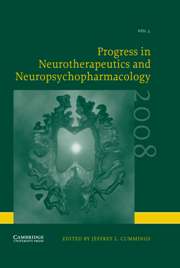No CrossRef data available.
Article contents
Intranasal Zolmitriptan Is Effective and Well Tolerated in Acute Cluster Headache: A Randomized Placebo-Controlled Double-Blind Crossover Study
Published online by Cambridge University Press: 04 December 2007
Extract
ABSTRACT
Background: Cluster headache is a form of primary headache characterized by short-lasting, excruciating unilateral head pains, associated with cranial autonomic features. The current gold-standard treatments of acute cluster headache are inhaled oxygen and sumatriptan by injection. The aim of the study was to evaluate zolmitriptan nasal spray (ZNS) in the acute treatment of cluster headache. Design/Methods: Ninety-two patients, aged 42 ± 10 years, 80 males and 12 females, with International Headache Society defined cluster headache were randomized into a placebo-controlled double-blind crossover study. One attack was treated with each of placebo, zolmitriptan nasal spray 5 and 10 mg (ZNS5, ZNS10). The primary endpoint was headache relief at 30 min: reduction from moderate, severe or very severe pain to nil or mild. The study was multi-center and multi-national, and was approved by the appropriate Ethics Committees. Results: Sixty-nine patients were available for an intention-to-treat analysis. The 30 min headache relief rates were: placebo 21%, ZNS5 40% and ZNS10 62%. Modeling the response as a binary outcome with regression methods, the Wald test was significant for the overall regression (χ2 = 29.4, p < 0.001), with both ZNS5 and ZNS10 giving significant effects against placebo. Headache relief rates for patients with episodic cluster headache were 30% for placebo, 47% for ZNS5 and 80% for ZNS10 while corresponding rates for patients with chronic cluster headache were 14%, 28% and 36%, respectively. Zolmitriptan intranasal was well tolerated. Interpretation: Zolmitriptan 5 and 10 mg intranasal is effective within 30 min and well tolerated in the treatment of acute cluster headache.
- Type
- Research Article
- Information
- Progress in Neurotherapeutics and Neuropsychopharmacology , Volume 3 , Issue 1 , January 2008 , pp. 127 - 135
- Copyright
- © 2008 Cambridge University Press




